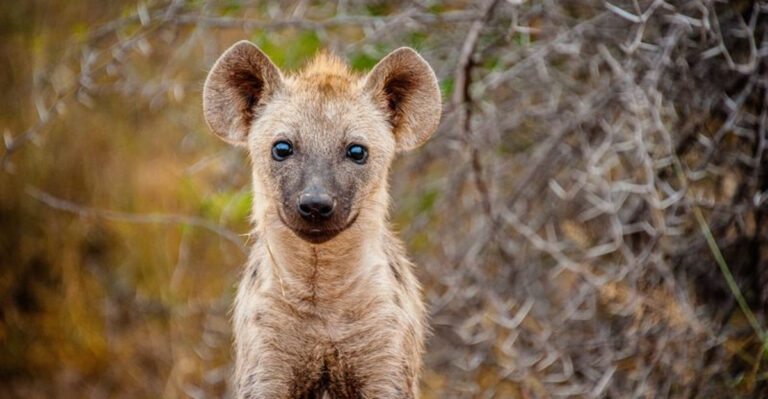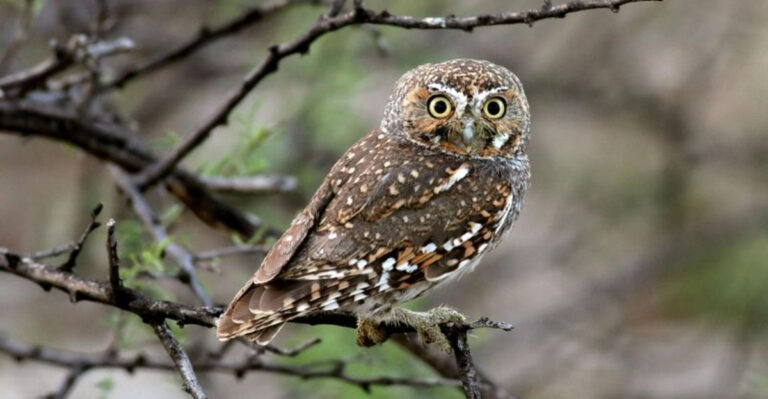The World’s Most Trafficked Mammal Is Teetering On The Brink Of Extinction
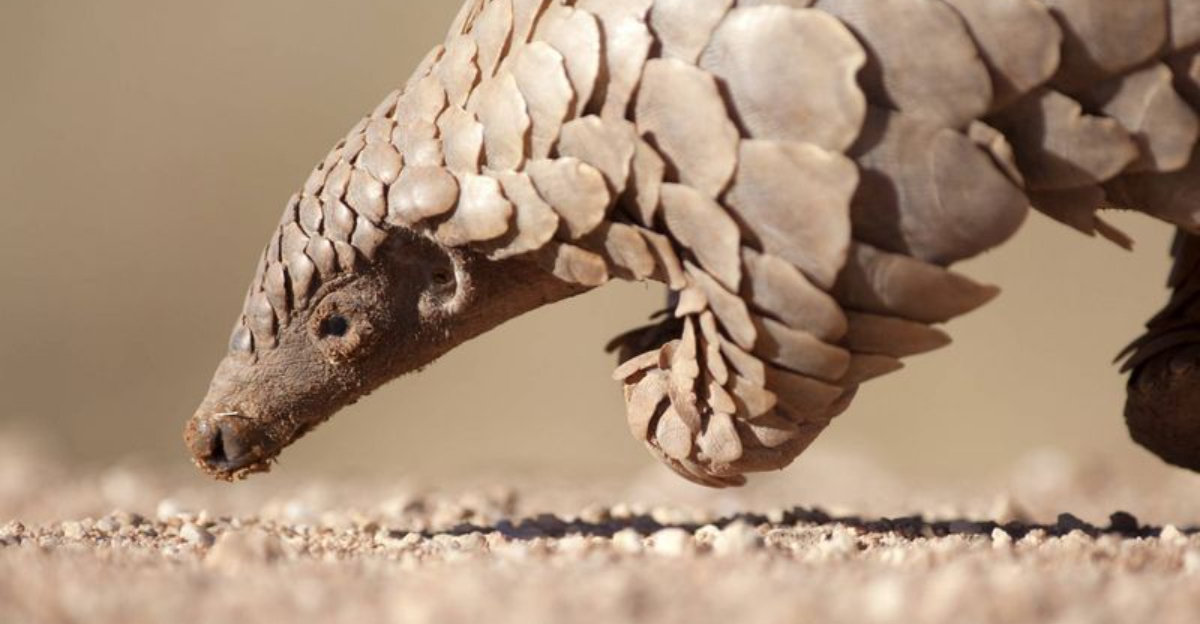
Hidden in the shadows of forests across Africa and Asia lives a mysterious creature that looks like a walking pinecone. The pangolin, despite its adorable appearance and gentle nature, faces a devastating future.
These remarkable animals are being hunted to extinction faster than any other mammal on Earth, yet many people have never even heard of them.
1. The Most Trafficked Mammal On Earth
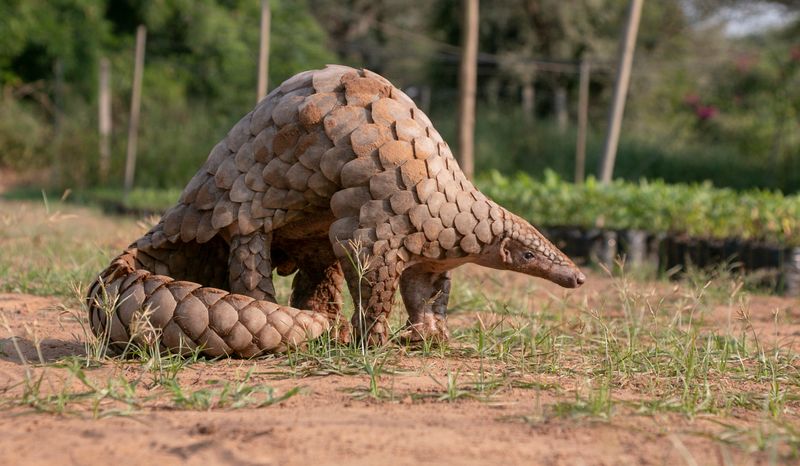
Imagine over 100,000 animals smuggled annually across international borders! Pangolins hold the unfortunate title of being more heavily trafficked than elephants, rhinos, and tigers combined.
Their scales and meat fetch astronomical prices on black markets throughout Asia, driving this shy creature toward oblivion despite increased conservation efforts.
2. Covered In Scales Made Of Keratin

Those distinctive overlapping scales aren’t actually reptilian – they’re made of keratin, the same protein in human fingernails and hair! When threatened, these scales form an almost impenetrable armor.
Ironically, this defensive adaptation that evolved to protect pangolins is precisely what makes them so valuable to poachers and traditional medicine practitioners.
3. Found In Both Africa And Asia
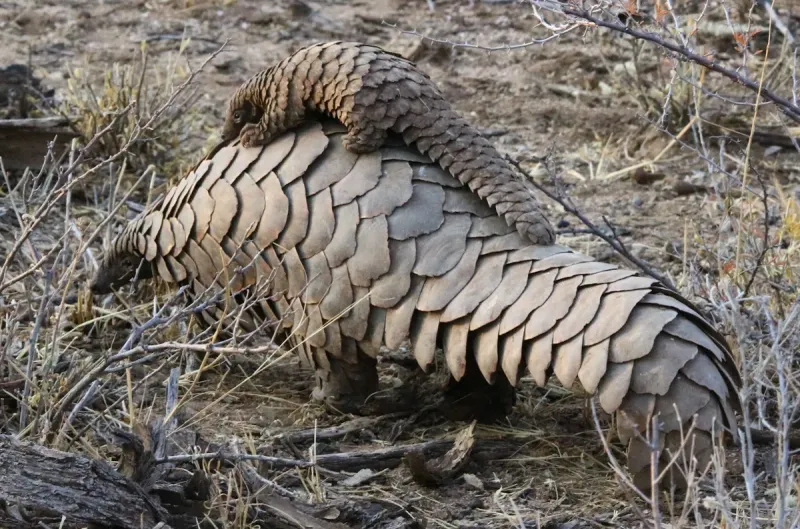
From the dense jungles of Central Africa to the tropical forests of Southeast Asia, these remarkable creatures have adapted to diverse habitats across two continents.
Eight distinct species exist worldwide. Four species call Africa home, while the other four inhabit various Asian countries including China, India, and the Philippines – each with unique adaptations to their environments.
4. Eats Thousands Of Ants And Termites Daily
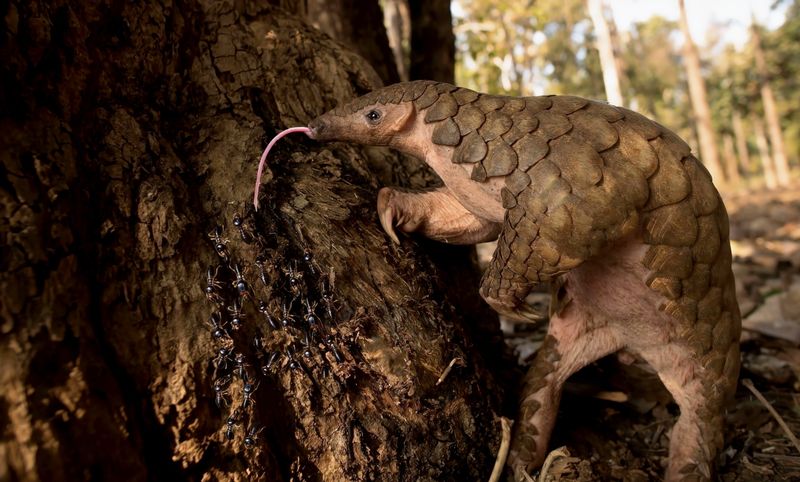
Talk about a specialized diet! A single pangolin can devour up to 70 million insects annually using their extraordinary four-foot-long sticky tongue that’s actually attached to their pelvis!
These natural pest controllers help farmers by regulating insect populations. Without their sticky tongues darting in and out 160 times per minute, termite mounds would overrun their habitats.
5. Rolls Into A Ball When Threatened
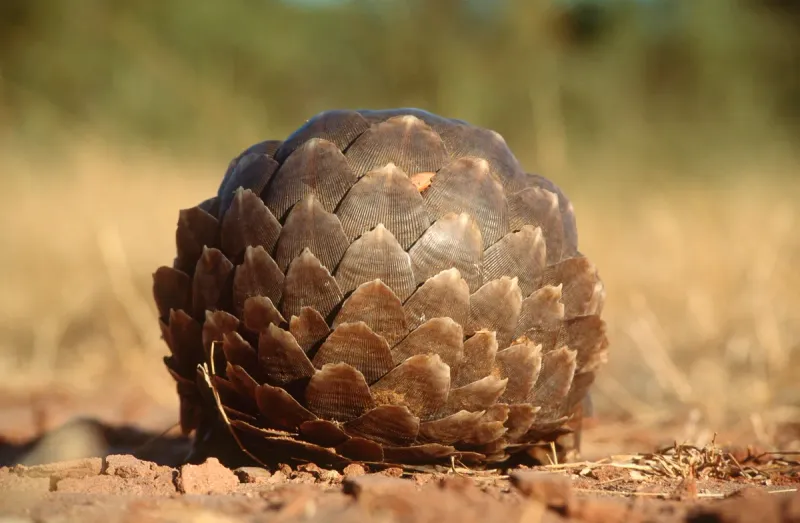
When danger approaches, pangolins perform their signature defense move – curling into a tight, impenetrable ball. Even powerful predators like lions and tigers can’t pry them open!
Their name actually comes from the Malay word ‘pengguling,’ meaning ‘roller.’ Sadly, this defensive position makes them easy for poachers to simply pick up and carry away.
6. Lacks Teeth And Uses Stones To Digest Food
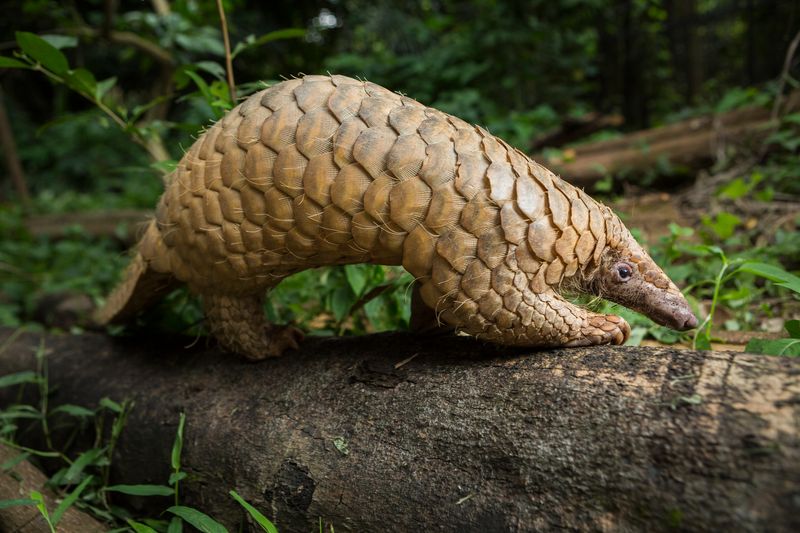
Despite their insect-heavy diet, pangolins don’t have a single tooth in their mouth! Instead, they swallow small stones that tumble around in their muscular stomachs, crushing their prey. This natural grinding mechanism works like a built-in mortar and pestle.
Their stomachs also have keratinous spines pointing inward to further pulverize their meals before digestion.
7. Baby Rides On Mother’s Tail For Safety

Nothing says ‘adventure’ like riding on mom’s tail! Baby pangolins (called pangopups) hitch rides on their mother’s tail as she forages for food, creating one of nature’s most heartwarming sights.
Born with soft scales that harden within days, these little hitchhikers stay with mom for up to two years, learning survival skills and insect-hunting techniques before venturing off on their own.
8. Nocturnal And Solitary By Nature
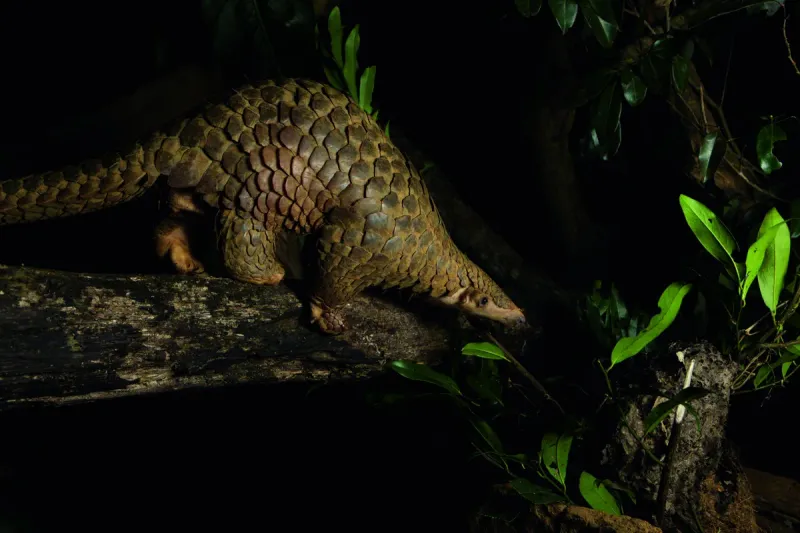
Moonlight is prime time for these elusive creatures! Pangolins prefer the cover of darkness, emerging from burrows or tree hollows to begin their nightly insect hunt while avoiding detection.
Their solitary lifestyle makes studying them incredibly challenging for scientists. Most pangolins encounter others only during brief mating periods, spending the majority of their lives in peaceful solitude.
9. Targeted For Meat And Traditional Medicine
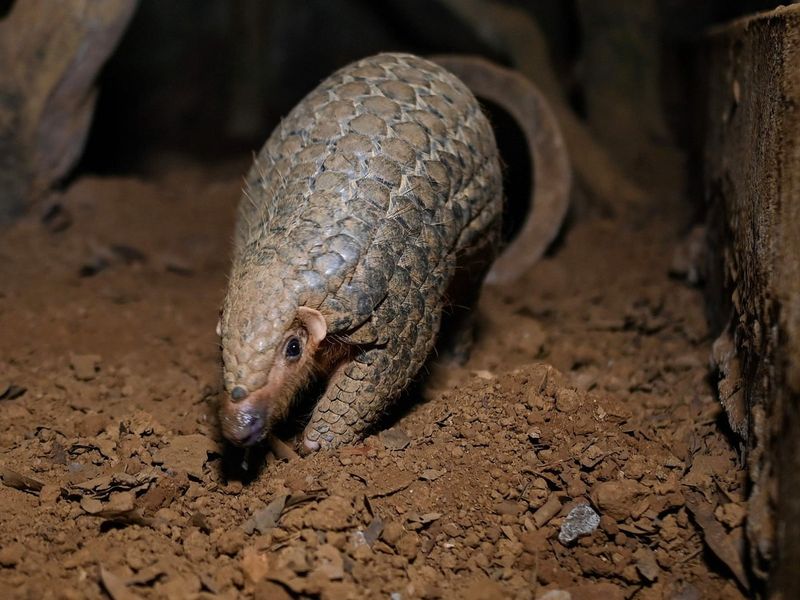
Considered a luxury delicacy in Vietnam and China, pangolin meat can fetch hundreds of dollars per pound. But their scales drive most of the illegal trade. Ground pangolin scales are falsely believed to cure everything from cancer to asthma in traditional medicine practices.
Scientific evidence shows the scales contain only keratin – offering absolutely no medicinal benefits whatsoever.
10. Lives In Forests, Grasslands, And Savannas

Master adapters, these scale-covered mammals thrive in diverse landscapes! Tree-dwelling pangolins in Asia scale trunks with their prehensile tails, while ground-dwellers in Africa dig elaborate tunnel systems.
Some species prefer humid rainforests while others inhabit dry savannas. Their remarkable adaptability would ensure their survival if not for the relentless pressure from human hunting and habitat destruction.
11. Extremely Difficult To Breed In Captivity
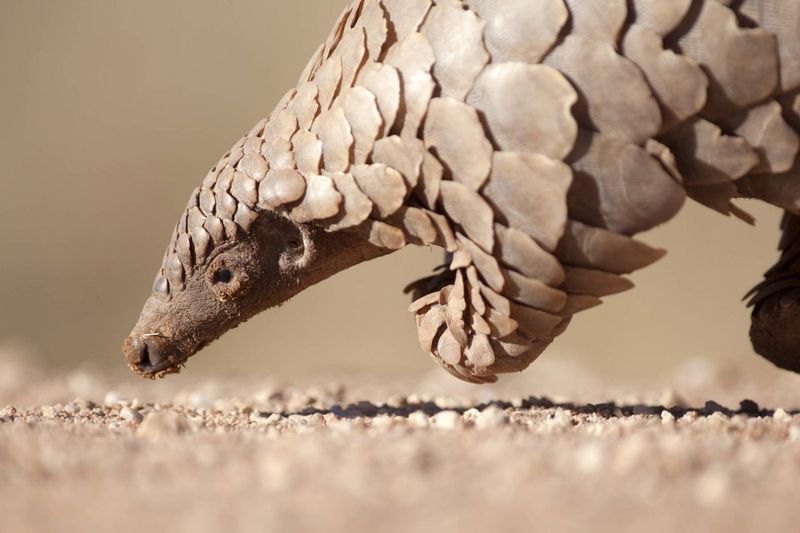
Frustratingly for conservationists, pangolins rarely reproduce in captivity. Their specialized diet, susceptibility to stress, and complex nutritional needs create nearly insurmountable breeding challenges. Many captured pangolins die within days from stress or improper care.
This breeding difficulty means that once wild populations disappear, we can’t simply regenerate them through captive breeding programs like other endangered species.
12. Protected Under International Wildlife Laws

Finally gaining legal protection! In 2017, all eight pangolin species received the highest level of protection under CITES (Convention on International Trade in Endangered Species), banning all commercial trade.
Despite these legal safeguards, enforcement remains challenging across their range countries. Corruption, limited resources, and high profit margins continue driving the illegal trade that threatens their existence.
13. Suffers From Rapid Habitat Loss

Beyond poaching, bulldozers pose another deadly threat. Rampant deforestation across Africa and Asia destroys critical pangolin habitat at alarming rates. Palm oil plantations in Indonesia and Malaysia have replaced vast swaths of rainforest.
Meanwhile, agricultural expansion and logging operations in Africa fragment remaining habitats, isolating pangolin populations and making them more vulnerable to hunters.
14. Faces Critical Risk Of Extinction Due To Poaching

Racing against time! Scientists estimate some pangolin species could vanish within a decade if current poaching rates continue. Their slow reproduction – just one offspring annually – can’t offset devastating population losses.
Conservation groups are desperately working to establish protected areas, train anti-poaching units, and raise public awareness. Without immediate intervention, our children may inherit a world where these unique creatures exist only in pictures.

